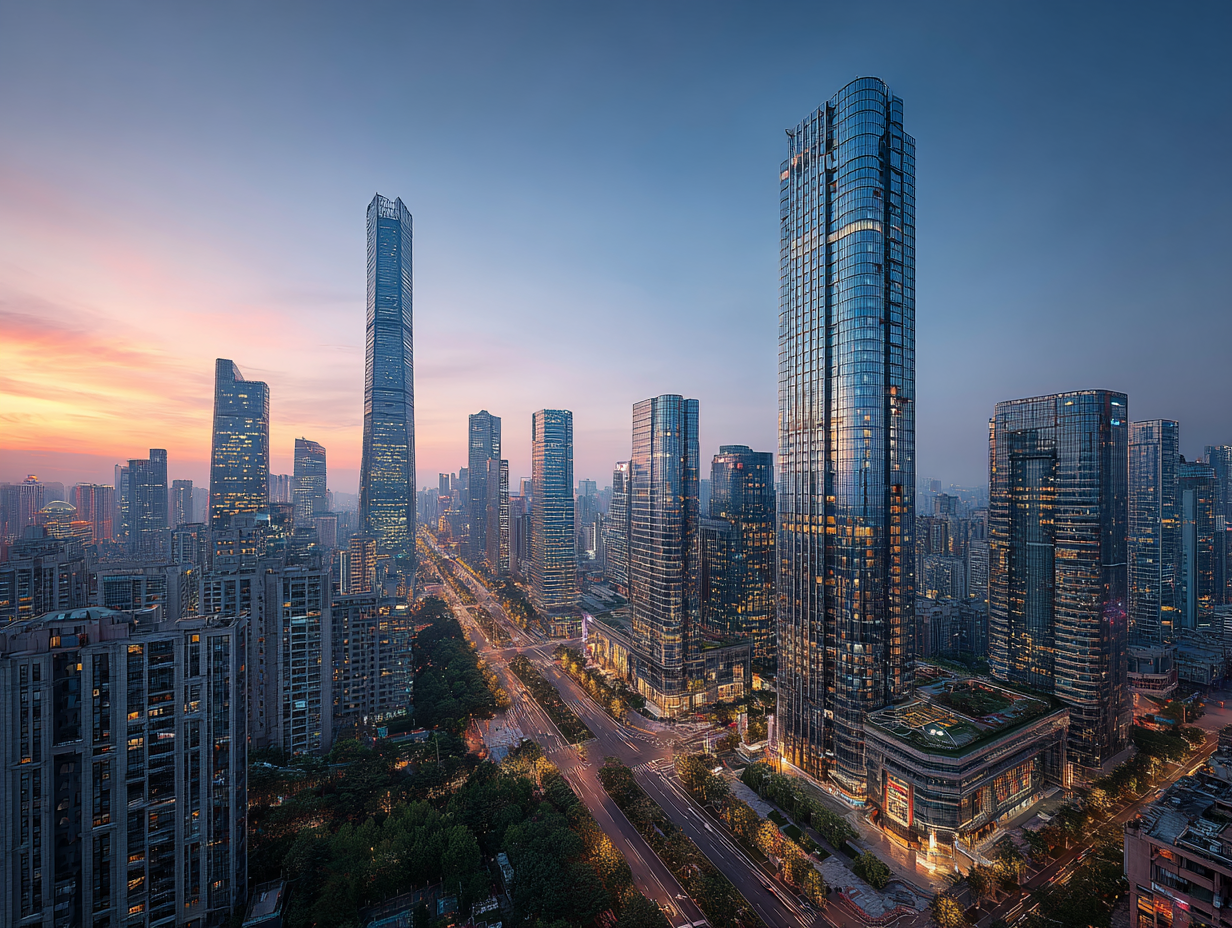Why China Feels Like the Future — And Why It Deserves a Place on Your Bucket List
When people think of bucket list destinations, China often comes second to more familiar names: Paris, Rome, New York, or Tokyo. And yet, after years of traveling to China, I can say with certainty — it is one of the most futuristic, perspective-shifting places you can ever visit.
I began traveling to China in my early twenties, when I was just starting my career as a fashion designer. My work often brought me there three or four times a year. Each trip lasted three to four weeks, and during that time, I wasn’t just visiting showrooms or offices — I was immersed. I explored vast fabric markets, worked side by side with local teams, and often spent weekends wandering into local neighborhoods. Over the years, these experiences added up to dozens of visits, each one leaving me more fascinated than the last.
And every time I came back home, I felt I had seen not just another country, but a glimpse of the future.
Cities — A Step Ahead
Walking through Shanghai for the first time, I remember being struck by its skyline. The tall glass towers reflected light in every direction, while below them, busy but structured streets, shopping centers, and gardens felt like a perfectly choreographed plan — this spoke so much about their perfection in planning. It wasn’t just the height of the buildings that impressed me, but the way everything connected — the amenities inside, the transportation options outside, the sheer sense of design.
Unlike cities where growth feels accidental, many of China’s urban centers feel intentional and built with foresight. You can sense that when you’re standing on a corner surrounded by high-rises that double as homes, offices, and lifestyle hubs all in one.
I’ve stayed for weeks in districts where you could walk from your apartment into a luxury shopping center, pick up dinner, and catch a train to another city — all without needing a car. That integration of life, leisure, and movement feels like a future that the rest of the world is still catching up to.
Infrastructure That Redefines Travel
One of the most unforgettable parts of my travels in China was the experience of taking the high-speed trains. These aren’t just trains — they’re symbols of what efficient, modern infrastructure looks like.
Imagine traveling from one megacity to another in just a few hours, with smooth rides, punctual departures, and sleek interiors, yes, all of these. I remember sitting by the window on my first trip from Shanghai to Guangzhou and being amazed at how quickly the landscape transformed outside. In many countries, a trip like that would have required hours of flights, check-ins, and delays. In China, it felt effortless.
That convenience opens up possibilities. Businesspeople meet clients across provinces in the morning and return home for dinner. Families explore neighboring cities on weekends without exhaustion. It’s a lifestyle shift, one that shows what’s possible when transportation is treated as an integral part of daily life.
Discipline and Vision
As a designer, one of my regular stops was the fabric markets, some of the biggest I have seen in the world. These were not small stalls or casual gatherings; they were well-organized and never-ending markets, filled with every imaginable fabric that could be found, from luxurious silks to technical blends. I’d spend hours, sometimes days, going through samples, negotiating, and discussing ideas with local teams, and this was a dream come true for any designer.
What always impressed me was the discipline and dedication of the people I worked with. The teams I collaborated with showed not just skill, but a tireless work ethic. Deadlines were met without reminders, standards were upheld, and every season brought forward new innovations.
That same discipline seemed to echo beyond the fashion industry. Whether in how cities were maintained, how transportation systems operated, or how services adapted to new technologies, I could see a culture deeply rooted in both tradition and progress.
Everyday Innovation
Another layer of China’s futuristic feel comes from its embrace of technology in daily life.
I vividly recall the first time I walked through a local market and noticed that nearly everyone was paying with their phone. QR codes were everywhere — at food stalls, in taxis, even at small shops. At the time, this was years ahead of what I experienced back home.
Apartments, too, were designed with convenience in mind. Modern complexes often include gyms, parks, and markets within walking distance. Amenities weren’t add-ons — they were built into the way neighborhoods were planned. Daily life felt seamless, supported by innovation that was already normalized.
Why China Belongs on Your Bucket List
Every destination offers something special — Italy has romance, Greece has history, Peru has wonder. But what China offers is perspective.
When you travel there, you don’t just witness the past (though the Great Wall, the Forbidden City, and countless temples are breathtaking). You also witness what the future of cities, infrastructure, and daily living could look like.
- If you love modern skylines, Shanghai will take your breath away.
- If you’re curious about innovation woven into daily life, you’ll see it everywhere, from trains to payment systems.
- If you appreciate discipline and dedication, working with or observing local professionals will leave you inspired.
China is not only about culture, food, and history — though those are reasons enough. It’s about stepping into a place that constantly reminds you what’s possible when vision meets action.
How to Travel Elegantly in China
If this is your first time considering China for your bucket list, here are a few notes from my own travels:
Booking Flights and Hotels
I usually book my flights and hotels through Expedia. It’s simple, reliable, and allows you to compare multiple options quickly. For a country as vast as China, where everything is organized in one place, is precisely what I needed.
Language
In Shanghai and Hong Kong, English is widely spoken, and navigating the city is relatively easy.
In mainland cities, English is less common. Communication can be a challenge, though signage is improving.
Guided Travel
I was always fortunate to travel with local colleagues and business partners. If you’re visiting for leisure, an organized group tour or private guide booked through services like Expedia – things to do or Viator can make your trip seamless.
Transportation
Try the high-speed rail — it’s more than transportation; it’s an experience that shows you how far infrastructure can evolve. The Shanghai airport is connected to the city by a high-speed train that everyone should experience.
Accommodations
Choose centrally located hotels in major cities. On Expedia or Hotels.com, you’ll find everything from five-star luxury hotels in Shanghai to boutique stays in Suzhou. These hotels are spectacular, offering so much inspiration for décor.
Cultural Approach
A smile, patience, and respectful body language go a long way. The warmth and hospitality you’ll receive in return make the journey even more memorable.
I strongly recommend China to everyone.
Every time I left China, I returned home with the same thought: I had just lived in the future. The skylines, the trains, the seamless way of life, the discipline of the people — all of it combined into an experience that is unlike anywhere else in the world.
That is why, even after countless visits, China doesn’t just belong on your bucket list. It belongs at the top. I can’t wait to go there with my son.






